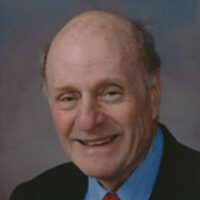Expertise
-
Professor Emeritus
Chemical Engineering
Overview
1. The Flow Dynamics of Suspensions of Solids to Be Used for Coating
There are a wide variety of industrial processes where coatings are produced from suspensions of solids. Polymer particles are used to coat paper and magnetic iron particles are used to coat polymer tapes to produce a magnetic tape product. These processes are done in such a way that the coating suspension moves relative to the surface being coated. Under these circumstances collisions between suspended particles can lead to agglomeration. The coatings have there best properties when they are made with small particles; so agglomeration is to be avoided. Using video microscopy of flowing suspensions, this work will study flow properties to define conditions which avoid agglomeration.
2. Transport and Adhesion of Blood Cells to Artificial Surfaces
A system for well controlled flow experiments with fluorescently labelled blood platelets is available. Particle balances at the blood-solid interface are used to evaluate biomaterials for blood compatibility. Since adherent activated platelets will form the base for a thrombus, we also evaluate the ability of surfaces to promote morphological changes in adherent cells. This is done with normal light microscopy, confocal microscopy and SEM; all aided with computer based image enhancement. Activities also include understanding and categorizing the biochemical pathways present. Experimental information is integrated with knowledge from cell biology and biochemistry for the cell types studied. This work is done at the McMaster University Health Science Centre within the Department of Pathology.
3. Computer Tracking of Blood Cells at Surfaces
Video tapes showing the adhesion, detachment and movement of fluorescently labelled blood cells require quantitative analysis. This will make available detailed cell-surface reaction rates and provide information on the flux of altered cells back into the circulation. A joint project with Dr. D.W. Capson of Electrical and Computer Engineering is using a computer approach to this problem requiring utilization of techniques for image enhancement and time efficient procedures for data manipulation.
B.Ch.E. City College of New York (1962)
M.S. Newark College of Engineering (1965)
Ph.D. University of Massachusetts (1969)
Recent
Bruil, A., Sheppard, J.I., Feijen, J. and Feuerstein, I.A. “In vitro leukocyte adhesion to modified polyurethane surfaces III. Effect of flow, fluid medium, and platelets on PMN adhesion”, Journal of Biomaterial Science, Polymer Edition, 5, 263-277, (1994).
Yeo, E.L., Sheppard, J.I. and Feuerstein, I.A., “Role of P-Selectin in polymorphonuclear cell adhesion to surface adherent platelets under physiologic shear conditions (An injury vessel wall model)”, Blood, 83, 2498-2507, (1994).
Feuerstein, I.A., McClung, W.G. and Horbett, T.A., “Platelet adherence and detachment with adsorbed fibrinogen: a flow study with a series of hydroxyethyl methacrylate-ethyl methacrylate copolymers using video microscopy”, J. Biomed. Mater. Res. 25, 221-237, (1992).
McClung, W.G. and Feuerstein, I.A. “Epifluorescent video microscopy (EVM) for platelet material interaction: methodology and preparative techniques”, Biomaterials 13, 871-877, (1992).
Feuerstein, I.A. and Sheppard, J.I., “States in adherent platelet morphology and the processing of adsorbed protein on biomaterials”, Biomaterials, 14, 137-147, (1992).

